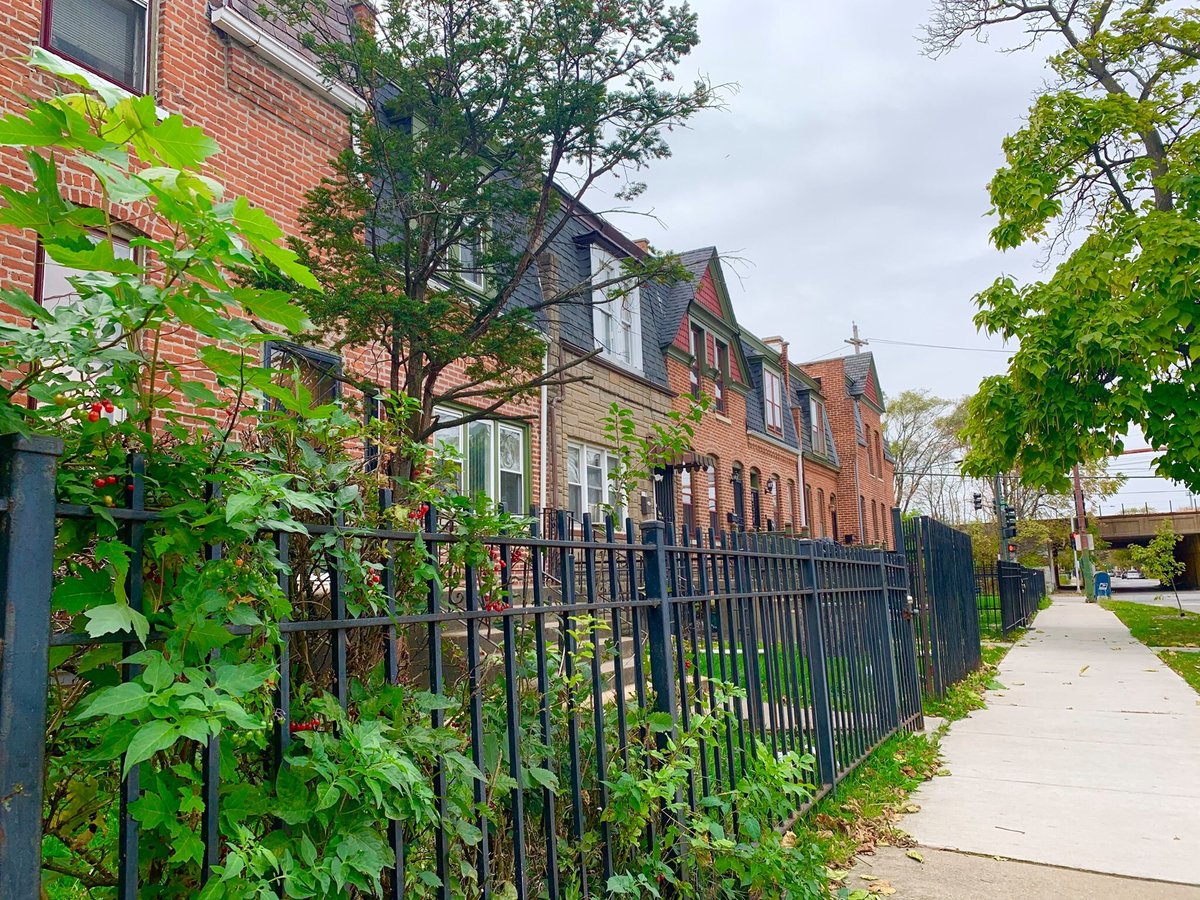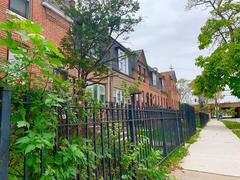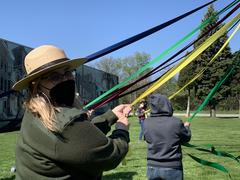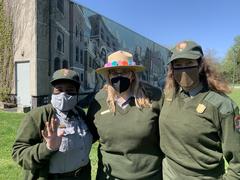
Pullman National Historical Park: Visiting Hours, Tickets, Accessibility, and Chicago’s Historic Gem
Date: 14/06/2025
Introduction
Pullman National Historical Park, situated on Chicago’s South Side, is a living monument to the nation’s industrial ingenuity, urban planning, and social transformation. Established in the 1880s by George Pullman as America’s first large-scale, planned industrial community, Pullman was designed to house workers of the Pullman Palace Car Company, famed for its luxury railroad sleeping cars. The community’s innovative design—featuring red-brick rowhouses, the grand Hotel Florence, and integrated commercial and industrial spaces—set the standard for “scientific planning” and welfare-minded urban development (Wikipedia; NPS Brochure).
Pullman is also renowned for its pivotal role in labor and civil rights history. The 1894 Pullman Strike fundamentally altered labor relations nationwide, while the Brotherhood of Sleeping Car Porters, the first African American labor union chartered by the American Federation of Labor, advanced both labor rights and civil rights (Classic Chicago Magazine; USA History Timeline).
Today, Pullman National Historical Park offers visitors preserved architecture, museums, educational programs, and a vibrant community, making it one of Chicago’s must-see historic destinations (NPS; Beyond My Door). This guide offers detailed information on visiting hours, tickets, accessibility, transportation, tours, and highlights of Pullman’s enduring legacy (Pullman IL News Release).
Pullman National Historical Park Overview
Historical Significance
Pullman’s origins trace back to George Pullman’s vision of a company town that would foster worker loyalty and efficiency through thoughtful urban design. Its innovative infrastructure included advanced sanitation, landscaping, residential amenities, and a hierarchy of housing options, all designed to minimize class tension and promote well-being (NPS Brochure).
However, Pullman’s model was not without controversy. The 1894 Pullman Strike, sparked by wage cuts without corresponding reductions in company-owned housing costs, escalated into a nationwide railroad boycott and a landmark in American labor history (Wikipedia). The federal intervention and legal precedents established during the strike had lasting impacts on labor rights and federal authority (USA History Timeline).
African American Pullman porters, through the efforts of A. Philip Randolph and the Brotherhood of Sleeping Car Porters, also advanced both labor and civil rights, securing better working conditions and laying groundwork for the broader Civil Rights Movement (Classic Chicago Magazine).
Planning Your Visit: Hours, Tickets, Directions, and Tips
Visiting Hours
- NPS Visitor Center (610 E. 111th Street): Open Thursday through Sunday, 9:00 AM–4:30 PM.
- Historic Pullman Foundation (HPF) Exhibit Hall (11141 S. Cottage Grove Ave): Open Thursday through Sunday, 11:00 AM–3:00 PM.
- Park Grounds: Open year-round; hours may vary for special events or holidays.
Always confirm hours before your visit on the official NPS Pullman page.
Tickets and Entry Fees
- General Admission: Free for Visitor Center, Exhibit Hall, and most outdoor areas.
- Tours & Special Programs: Some ranger-led or specialty tours require advance registration or a nominal fee. Check the Historic Pullman Foundation website and NPS events page for details.
Accessibility
The park is committed to accessibility:
- Wheelchair Access: All main facilities are wheelchair accessible; a wheelchair is available for loan.
- Restrooms: Accessible restrooms, including family and infant-changing facilities, are provided.
- Assistive Devices: Captioned media, assistive listening, Braille, and audio description units are available.
- Outdoor Paths: Accessible sidewalks and ramps throughout the historic district. For specific accommodation needs, contact [email protected] or call 773-928-7257 (NPS Accessibility Guide).
Directions and Parking
- By Car: From I-94, exit at 111th Street (#66A), head west to Cottage Grove Ave, then south to 112th St. Free parking lots and street parking (with accessible spaces) are available at main entrances.
- By Public Transit:
- Metra Electric Line: Millennium Park terminal to 111th Street–Pullman Station (closest) or 115th Street–Kensington Station (express).
- CTA Bus: Routes available via the CTA trip planner.
- Rideshare: Convenient for direct access to Visitor Center.
Key Sites and Experiences
Administration Clock Tower Building & Visitor Center
The iconic 1881 Administration Clock Tower Building serves as the park’s main visitor center, with exhibits, introductory films, brochures, and National Park Passport stamps. Staffed by NPS rangers and volunteers, it provides the essential orientation for your visit (NPS; Beyond My Door).
Ranger-Led and Self-Guided Tours
- Ranger-led tours: Offered Thursday to Sunday at 11:00 AM and 2:00 PM, these 45-minute walks cover key sites like the Administration Building, Greenstone Church, Market Square, Hotel Florence exterior, and historic rowhouses (Wander Filled Life).
- Self-guided tours: Interpretive signage and digital resources are available for independent exploration.
Historic Pullman Foundation Exhibit Hall
Located at 11141 S. Cottage Grove Ave, the Exhibit Hall features artifacts, photos, and displays on Pullman’s history. Open to the public during main visiting hours (Beyond My Door).
Pullman House Project & Annual House Tours
Experience restored Pullman homes through the Pullman House Project and the annual Historic Pullman House Tour (October), which showcase residential architecture from worker cottages to executive mansions (Campfires & Concierges). The December Candlelight House Walk offers a festive look at decorated historic homes.
Hotel Florence
While closed for restoration, the grand exterior of Hotel Florence (11111 S. Forrestville Ave.) is a highlight of any visit. The hotel was once the town’s social center and featured in films like “Road to Perdition” (Beyond My Door).
Greenstone Church
A Romanesque landmark with a unique green serpentine stone façade, Greenstone Church remains an active place of worship and a key stop on tours (Campfires & Concierges).
Market Square
Once the commercial heart of Pullman, Market Square’s renovation is underway, with plans to restore its role as a community gathering place (Campfires & Concierges).
Pullman Rowhouses and Streetscapes
More than 1,300 original rowhouses line the district’s streets, representing a range of social classes and architectural styles. Stroll the neighborhood to appreciate their preserved facades (Beyond My Door).
A. Philip Randolph Pullman Porter Museum
Located at 10406 S. Maryland Ave., this museum honors the Brotherhood of Sleeping Car Porters and their impact on labor and civil rights (NPS; Travel Experience Live).
Special Events
- First Sunday Walking Tours: May–October, led by local residents.
- Annual Historic Pullman House Tour: October, featuring private homes.
- Candlelight House Walk: December, a festive tour of historic homes. Check HPF and NPS events for current schedules.
Community Preservation, Revitalization, and Cultural Heritage
Grassroots Preservation
Pullman’s survival is due to decades of grassroots advocacy. When demolition threatened in the 1960s, the Pullman Civic Organization and Historic Pullman Foundation mobilized to secure historic designations and restore key structures (Chicago Sun-Times; Pullman Museum PDF). Pullman became a National Historic Landmark District in 1970, a Chicago landmark in 1972 and 1993, a National Monument in 2015, and a National Historical Park in 2022.
Economic and Social Revitalization
Over $100 million in public and private investment has rejuvenated Pullman, restoring historic buildings, improving public transit, creating green spaces, and supporting affordable housing (Positioning Pullman; NPCA). Organizations such as Chicago Neighborhood Initiatives (CNI) have targeted real estate development and historic home rehabilitation (Pullman Museum PDF).
Placemaking and Cultural Trails
Recent efforts focus on placemaking and public art. The proposed Pullman Cultural Trail will connect sites via interpretive outdoor exhibits, murals, and interactive elements (NPCA). Community organizations foster engagement through gardening, beekeeping, concerts, and annual events, strengthening Pullman’s unique social fabric (Pullman Museum PDF).
Visitor Experience and Recommendations
Tips for a Memorable Visit
- Start at the Visitor Center for exhibits, maps, and current event information.
- Join a guided or self-guided tour to gain deeper insights.
- Wear comfortable shoes; the district is best explored on foot.
- Bring water and snacks, as nearby dining options are limited.
- Respect private residences—most homes are occupied except during special house tours.
- Check event calendars for tours and seasonal programs.
Virtual Exploration
If you can’t visit in person, explore Pullman through NPS virtual tours, online galleries, and interactive maps.
Frequently Asked Questions (FAQ)
Q: What are Pullman National Historical Park’s visiting hours?
A: The Visitor Center is open Thursday–Sunday, 9:00 AM–4:30 PM (some facilities 11:00 AM–3:00 PM). Always check the NPS website for seasonal changes.
Q: Is there an admission fee?
A: No, general admission is free. Certain tours and events may require tickets.
Q: Are guided tours available?
A: Yes, ranger-led and special tours are available; some require advance registration.
Q: Is the park accessible?
A: Yes, main sites are wheelchair accessible; contact the park for specific accommodation needs.
Q: How do I get there?
A: By car, Metra Electric Line, or CTA. Parking and public transit options are detailed above.
Q: Are pets allowed?
A: Pets are welcome outdoors on leash but not inside buildings.
Community-Driven Revitalization and Living Heritage
Pullman’s story continues through active preservation, economic investment, and cultural innovation. Community organizations, public-private partnerships, and residents drive the neighborhood’s evolution, blending historic legacy with modern vibrancy (Chicago Sun-Times; Islands.com). The Pullman National Historical Park is not just a site of memory, but a living, breathing community.
Plan Your Visit Today
Pullman National Historical Park offers a compelling journey through American history, architecture, and social change. For the latest updates, event information, and visitor tips, consult the NPS Pullman page and the Historic Pullman Foundation. Download the NPS app for digital guides and follow official social channels for news and visitor stories.
Enhance your Chicago itinerary by also exploring nearby cultural districts like Bronzeville, the Museum of Science and Industry, and Jackson Park.
References
- Wikipedia
- National Park Service Brochure
- USA History Timeline
- Classic Chicago Magazine
- Pullman IL News Release
- NPS Visitor Information
- Beyond My Door
- Wander Filled Life
- Campfires & Concierges
- Pullman Museum PDF
- Positioning Pullman
- NPCA
- Islands.com
- Travel Experience Live
For images, virtual tours, and interactive maps, visit the official NPS Pullman website and affiliated local organizations. For continuous updates, download the Audiala app and explore more articles on Chicago history and urban revitalization.


































































































































































